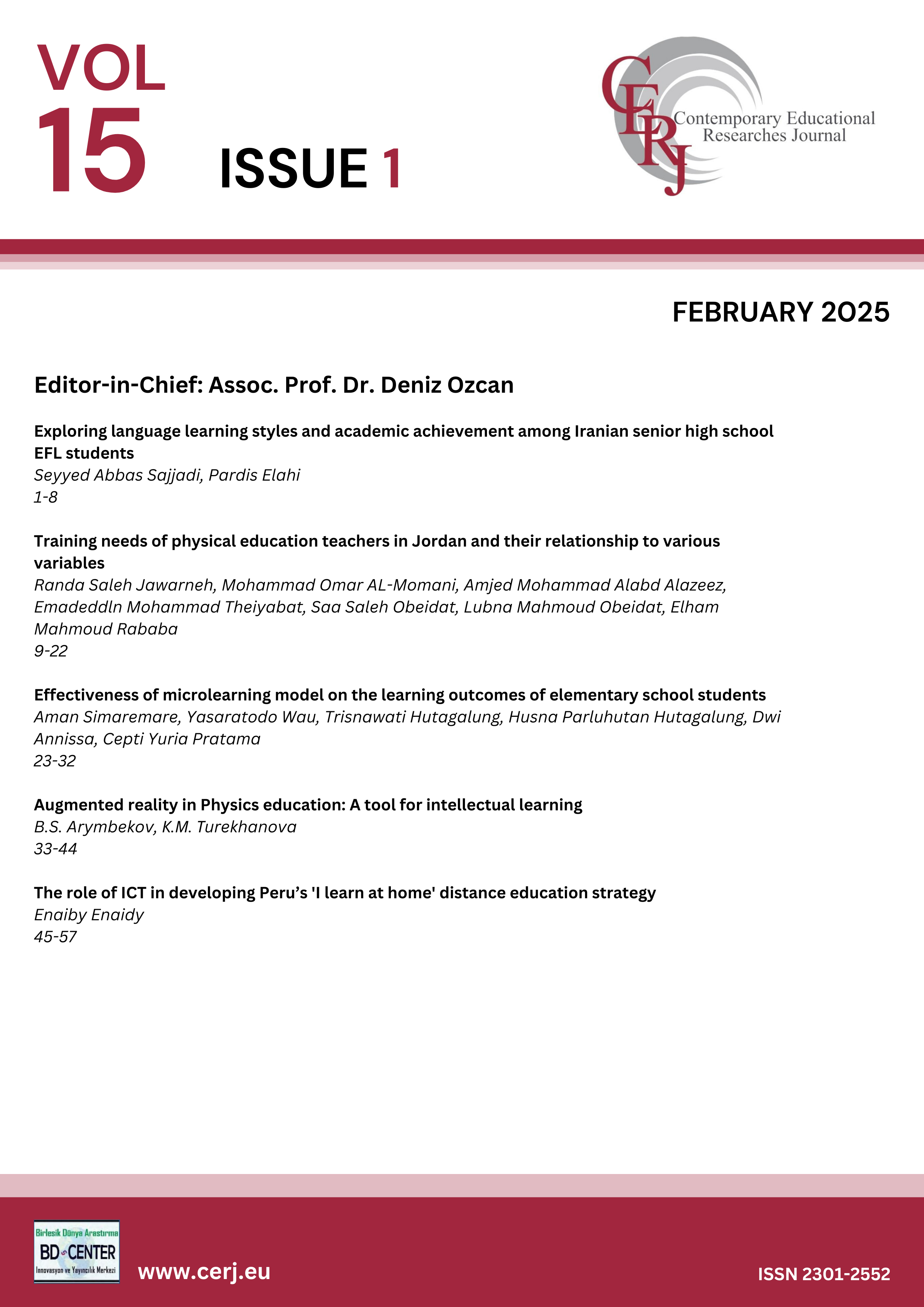Effectiveness of microlearning model on the learning outcomes of elementary school students
Main Article Content
Abstract
This study aimed to evaluate the effectiveness of the Microlearning model on student learning outcomes. The study involved students from class VC (n = 24) and class VB (n = 23). A randomized posttest-only control group design experimental approach was used, with data collected through multiple-choice tests created by the class teacher. The research data were analyzed using descriptive and inferential statistics, specifically the student t-test with a significance level of 0.05. The findings revealed a significant difference in learning outcomes between the class using the microlearning model and the class employing a conventional model. These results suggest that the microlearning model significantly enhances student learning outcomes, demonstrating its effectiveness as a teaching strategy. The study highlights the potential of microlearning in improving educational practices and provides valuable insights for educators seeking to optimize student engagement and achievement.
Keywords: Elementary school; learning outcomes; microlearning model; students
Downloads
Article Details

This work is licensed under a Creative Commons Attribution-NonCommercial-NoDerivatives 4.0 International License.
Authors who publish with this journal agree to the following terms:
- Authors retain copyright and grant the journal right of first publication with the work simultaneously licensed under a Creative Commons Attribution License that allows others to share the work with an acknowledgement of the work's authorship and initial publication in this journal.
- Authors are able to enter into separate, additional contractual arrangements for the non-exclusive distribution of the journal's published version of the work (e.g., post it to an institutional repository or publish it in a book), with an acknowledgement of its initial publication in this journal.
- Authors are permitted and encouraged to post their work online (e.g., in institutional repositories or on their website) prior to and during the submission process, as it can lead to productive exchanges, as well as earlier and greater citation of published work (See The Effect of Open Access).
